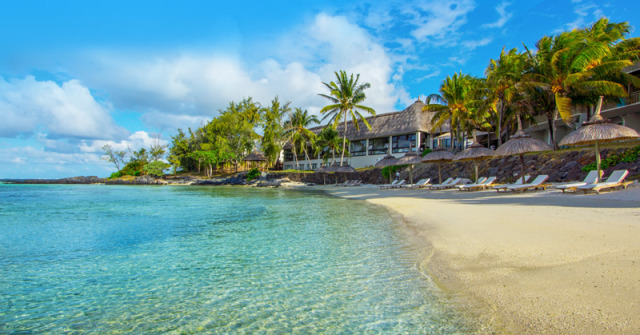Tourism in Goa has always been synonymous with sun-kissed beaches, vibrant nightlife, seafood shacks, and Portuguese heritage. Located on India’s western coast, Goa is much more than just a beach destination. Its unique blend of cultures, colonial architecture, festivals, serene villages, and adventure sports makes it a favourite for Indian and international travellers alike. Here is a detailed guide to Tourism in Goa and the experiences that make it India’s most sought-after destination.
1. North Goa – The Hub of Beaches and Nightlife
North Goa is the heart of Goa’s vibrant tourism. Popular beaches like Baga, Calangute, Anjuna, and Candolim attract travellers for their golden sands, beach shacks, water sports, and nightlife. Anjuna Beach is famous for its flea market on Wednesdays, offering jewellery, clothes, souvenirs, and handicrafts.
For nightlife lovers, Tito’s Lane in Baga is lined with clubs and bars. Curlies and Shiva Valley at Anjuna, and Club Cabana at Arpora, are iconic spots to experience Goa’s party culture. Chapora Fort, near Vagator, offers stunning sunset views and gained fame from the movie Dil Chahta Hai.
2. South Goa – Serenity and Luxury
Tourism in Goa isn’t complete without exploring South Goa, known for its quieter, cleaner beaches and luxury resorts. Colva, Benaulim, Palolem, Agonda, and Varca beaches offer tranquil settings ideal for relaxation, yoga, and peaceful walks.
Palolem Beach is famous for its crescent shape and silent discos, while Agonda Beach is perfect for meditation and solitude. South Goa also houses luxury properties and Ayurvedic retreats for wellness travellers.
3. Old Goa – Heritage and Spirituality
Old Goa showcases the state’s rich Portuguese heritage and is a UNESCO World Heritage Site. The majestic Basilica of Bom Jesus, housing the mortal remains of St. Francis Xavier, is visited by pilgrims from around the world.
Other architectural marvels include Se Cathedral, Church of St. Cajetan, and Church of Our Lady of the Immaculate Conception in Panaji, famous for its white façade and annual December feast. These churches reflect the grandeur of Portuguese architecture and the spiritual essence of Tourism in Goa.
4. Panaji – The Charming Capital
Panaji (Panjim), the state capital, offers a mix of heritage and modernity. Stroll through Fontainhas, Goa’s Latin Quarter, with its colourful Portuguese houses, art galleries, and cafes. Visit the Goa State Museum, shop at local markets, and enjoy a sunset cruise on the Mandovi River with Goan folk dance and music performances.
5. Adventure and Water Sports
Tourism in Goa attracts adventure enthusiasts for its range of water sports. Activities include parasailing, jet skiing, banana boat rides, kayaking, scuba diving, and snorkelling at beaches like Calangute, Baga, and Candolim. Dudhsagar Waterfalls, located on the Goa-Karnataka border, offers thrilling jeep safaris and is best visited during or just after the monsoon.
6. Spice Plantations and Village Tours
Beyond beaches, Tourism in Goa offers spice plantation tours in Ponda, where visitors can see the cultivation of cardamom, pepper, nutmeg, and cloves. Village tours in Saligao, Siolim, and Aldona offer glimpses into Goan village life with traditional homes, temples, and vibrant markets.
7. Festivals in Goa
Goa is known for its colourful festivals that reflect its diverse culture. Goa Carnival, held in February, features grand parades, music, dance, and floats. Shigmo, the spring festival, is celebrated with folk dances and cultural programmes. Christmas and New Year are celebrated with grand midnight masses, beach parties, and fireworks, making it peak season for Tourism in Goa.
8. Goan Cuisine – A Gastronomic Delight
Food is integral to Tourism in Goa. Goan cuisine is a blend of Konkani, Portuguese, and Saraswat influences. Must-try dishes include Goan fish curry rice, pork vindaloo, xacuti, cafreal, and sorpotel. For vegetarians, sol kadhi and mushroom xacuti are delicious options.
Beach shacks, bakeries serving bebinca (layered coconut dessert), cafes offering Goan sausages, and feni (local cashew liquor) complete the culinary journey.
9. Best Time to Visit Goa
- November to February: Peak season with pleasant weather, ideal for beach holidays and festivals.
- March to May: Hot and humid but less crowded; good for budget travellers.
- June to September: Monsoon season transforms Goa into lush green paradise, ideal for nature lovers and those seeking a quiet retreat.
10. How to Reach Goa
- By Air: Goa International Airport (Dabolim) connects with major Indian cities and international destinations. Mopa Airport (North Goa) is operational for domestic flights.
- By Rail: Madgaon and Thivim are the main railway stations, well connected to Mumbai, Bangalore, Delhi, and other cities.
- By Road: Buses and taxis connect Goa to Mumbai, Pune, and Karnataka cities via NH66.
Conclusion
Tourism in Goa offers an experience that blends relaxation, heritage, adventure, and culture. Whether you want to party on Baga Beach, meditate on Agonda sands, explore grand churches in Old Goa, or enjoy a romantic sunset cruise in Panaji, Goa has something for every traveller. Its warm people, vibrant festivals, delectable cuisine, and scenic landscapes will keep you coming back for more. Plan your trip to Goa and discover why it remains India’s favourite holiday destination.

